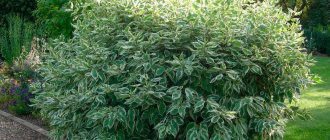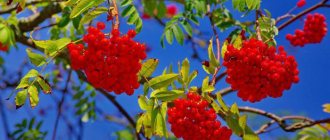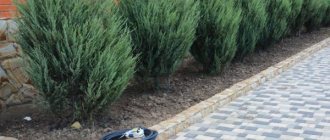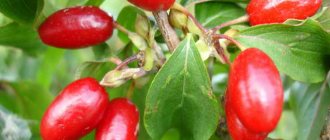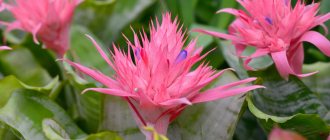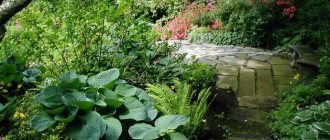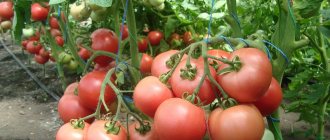Site selection
Before planting rowan, it is important to choose a good place on the site. An adult tree reaches large sizes, so it is recommended to plant seedlings along the perimeter of the garden at the very border of the site. Then the trees will not shade nearby plantings.
In open ground, rowan grows successfully on almost any type of soil.
But, as gardening practice shows, trees planted on light and fertile soil grow faster and look more beautiful. Light loamy soil that retains moisture is ideal for growing this tree.
Peculiarities
There are many varieties and varieties of rowan, there are low-growing varieties and tall trees. The color of the berries and inflorescences of a given tree may vary. Depending on the variety, the color of rowan fruits varies from bright orange to white. To spread it throughout the dacha, it must be properly grafted.
In the wild, mountain ash reproduces by seeds, which are carried by various birds. The fruits of such trees are sour and bitter. Garden varieties of rowan delight with tasty, fragrant, sweet berries.
The propagation of garden varieties of rowan has some features. There are several ways to propagate this tree at home: planting with seeds, cuttings and budding.
- When planting seeds, it is necessary to properly collect and prepare planting material. Seeds must be collected from the ripest berries. Then they are thoroughly washed and dried. In early spring or late autumn, seed material is sown in open ground. After pre-soaking for some time in warm water. Planting depth is about two centimeters. The seeds are sprinkled with earth, humus and dry leaves on top.
- Propagating rowan using cuttings is a simpler and easier way. The cuttings can be either annual, lignified, or young, green. Lignified cuttings are harvested and planted in the fall. To do this, the required number of annual shoots are cut from the tree and planted in open ground. For propagation by green cuttings, any tree is suitable. Young, green shoot tips are used as planting material. Prepared cuttings are planted in the spring, in a greenhouse or greenhouse.
- Budding. This method involves grafting a garden, varietal rowan bud onto a seedling. This method of propagating rowan is quite complex and requires certain skills and compliance with certain rules.
There are many varieties of rowan in nature. For optimal growth and fruiting of each type of rowan, certain climatic conditions are necessary:
- The most famous and popular species is the mountain ash.
- No less popular and widespread is alder ash.
- Very often you can find another type of rowan tree - Tibetan.
- Kashmiri. This type of rowan is resistant to low temperatures, so it is quite common in Russia.
- Mixed. This type of rowan tree is most typical for Sakhalin, Japan, and so on.
- Rowan aria. It is a tall species and prefers calcareous soils.
Read also: Kumquat - composition, benefits and harms, calorie content
Basic Rules
Now let's move on to the main thing - how to grow rowan so that it is beautiful, healthy and fruitful.
Rowan berries are planted in autumn or spring (early April). If you plan to grow a tree for its fruits, it is advisable to plant several varieties on the site, since rowan is a self-sterile plant and requires pollinators.
Trees should be planted at a distance of 5–6 m from each other. Rowan seedlings have large and long roots, so a deep and wide hole is prepared for them - 80x80 cm.
The bottom of the pit is filled with a nutrient mixture. To prepare it you will need:
- rotted manure or compost - 1 bucket;
- wood ash and superphosphate - 1 handful each.
The mixture of nutrients is mixed with the soil removed from the hole and poured back into the hole.
The roots of the plants are lowered into the hole, straightened out, then sprinkled with the remaining garden soil. The earth around the trunk is lightly compacted. The seedlings are watered abundantly.
To stimulate the growth of the root system, the apical shoot is pruned immediately after planting.
The next year, the side branches are pruned. In this way, a beautiful crown of a young tree is formed.
Planting rowan
It is planted in the fall or early spring - usually before the end of April, since it begins to grow early. To obtain a more generous harvest, it is better to purchase several varieties of rowan: single-variety plantings, although prone to self-fertility, are still less productive.
Plant trees at a distance of at least 4-6 m from each other. Pits are dug with a depth and width of 60-80 cm. They are filled with a mixture of compost soil with a fertile surface layer of soil, to which a handful of ash and superphosphate and 2-3 shovels of three-year-old manure humus are added (fresh, unrotted manure burns the roots). After planting, rowan seedlings must be watered and the central conductor shortened, and the next year - young and side shoots.
Features of care
It is important not only to plant rowan correctly, but also to provide it with proper care, especially in the first years of life.
Care consists of regularly removing weeds, loosening the soil, pruning, watering and fertilizing.
Trimming
Considering the fact that the tree grows very quickly and rapidly in the spring, pruning should be done early - in early or mid-March. In young plants, branches damaged by frost and wind, as well as broken shoots, are pruned. Shoots that are too long are shortened arbitrarily.
Watering
Young plants should be watered as the soil dries and depending on climatic conditions. At least 10 liters of water should be poured under one tree.
Feeding
Rowan begins to be fed from the age of three. Trees are fertilized with mineral compounds three times per season:
- before the start of the budding period, add a mixture of 25 g of nitrogen, 15 g of potassium and 25 g of phosphate fertilizers;
- in the summer, trees are fed with the same mixture, only in a lower concentration - 10 g of each component;
- in the fall, after the harvest is harvested, the trees are fed with phosphorus and potassium fertilizers - 10 g of each substance.
This amount of fertilizer is calculated for 1 m2 of land.
Grafting rowan onto rowan
For a regular variety, the split grafting method is perfect. To perform this procedure, you will need to prepare cuttings. It is recommended to separate areas from shoots in January. Tie the prepared cuttings into a bundle and dig into the ground to a depth of no more than 15 cm.
Rowan grafting takes place in the spring. You need to use the strongest cuttings on which buds have appeared. Before planting it, it is necessary to clean the lower part of the soil and cut it into a blade. On the other hand, you will need to cut a small section of the cutting at an angle to the first bud.
For quick rooting, you need to treat the scion with a garden decoction.
Make a 3 cm deep split on top of the key plant and place the scion in it. Wrap the place where the two elements are connected with ethylene polymer and carefully tie it with thread.
Place the grafted seedling in a greenhouse. It is worth deepening it into the ground to the point of connection. The optimal soil in this case would be a mixture of sand and peat. It is not recommended to use other types of soil, as they are not capable of excellent air permeability.
In order for the seedling to develop properly, not only the substrate, but also the air should be constantly moistened. As soon as the parts have successfully grown together, you can plant the mountain ash in a permanent place of growth. But before carrying out the procedure, you will need to trim off all the sprouts on the supply.
Seed cultivation
Rowan reproduces quite successfully by seed. Let's take a closer look at the process of growing rowan from seeds. To do this you will need freshly harvested seed material. Seeds are collected in the fall, before frost sets in.
To obtain healthy seedlings, you should take dense berries without rot or damage. Rowan berries are carefully kneaded, poured with cold water and soaked in moisture for an hour. Then they are washed, and high-quality seeds sink to the bottom.
The seeds are sown in open ground in shallow grooves - 1-1.5 cm. The seedlings are sprinkled with humus on top and left to overwinter in this state. Under these conditions, they will undergo natural stratification throughout the winter. In early spring, it will be possible to observe the friendly germination of seedlings.
Young plants grown from seeds grow in one place for 3 years. After this, they can be transplanted to a permanent place.
Methods of propagation of chokeberry.
It is best to propagate this crop in the fall. However, you can do this work in the spring. It should be noted right away that due to the fact that in different regions there are different climatic conditions, the timing of work on propagating shrubs will, of course, be different. That is why, first of all, you should take into account weather conditions and coordinate them with the gardening calendar. If you propagate chokeberry in the fall, it is best to do this in September or October. It is not difficult to care for the plantings in the future, and if you propagate the shrub in the spring, it is better to carry out planting work in March or April. However, take into account the climatic conditions of the region where you live. Therefore, everything needs to be done in a timely manner. Chokeberry is propagated by many methods. Firstly, this is cuttings, secondly, breeding layering, as well as dividing shrubs. Chokeberry can be propagated by seeds, through grafting, and also through the formation of root suckers. It should be said that propagation by seeds and grafting is the least effective compared to the previous proposed methods, therefore, if you are a beginner gardener, then it is best to do, for example, cuttings. But only experienced gardeners can graft a plant or plant seeds. If we talk about cuttings, it can be done both in spring and autumn. In order to cut off the necessary branches, it is best to choose young shoots. Cuttings are cut at the end of May or at the beginning of June. And then they are grown in greenhouses or greenhouses. It should be said that they winter there too. But it will be possible to plant cuttings in a permanent habitat only next season. Very often, gardeners take cuttings in the fall. For this purpose, already lignified annuals are used; it is these shoots that adapt better to new conditions. Moreover, these shoots are immediately planted in a new place. In principle, they take root normally. If we talk about dividing the bush, then it should be noted that it is best to divide old plants. They must have strong shoots and a good root system, it is better to do this in the spring; before this procedure, it is recommended to water the chokeberry intensively; after transplanting, the plants are also watered abundantly, and the soil around them is loosened. Layers are rooted mainly in the spring. For this purpose, both one-year and two-year-olds are used. It is these shoots that best take root in the soil and form roots. In order to propagate chokeberry using the layering method, you will need to dig peculiar grooves, bend the shoots to the ground, cover them with loose soil and wait for the root system to form. But it will be possible to separate the shoots from the mother bush only next season. It should also be said that sometimes new plants do not take root. A lot of shoots usually form around the chokeberry bushes, so the root shoots are often transplanted to new habitats, separating them from the mother bush. And they do this throughout the season. However, it is most effective to carry out these procedures in summer and spring. New plants must be given time to adapt to new conditions. But it takes a very long time to propagate chokeberry with seeds; in addition, such planting material will need to be stratified, but despite this, the germination rate of the seeds is still very low, and the plant takes a very long time to develop. You can more quickly propagate chokeberry by grafting; this must be done in the spring, but in order for the cutting to take root well on the new plant, you will need to provide the shrub with favorable growing conditions and care for it properly. However, even in this case, the vaccine does not take root very well. Well, we have described the main methods of propagation of chokeberry, and now we will proceed to a more specific description of the presented methods of propagation.
Cuttings
You can get a new rowan tree using cuttings. Propagation by cuttings is one of the most effective methods, since the young plant retains all the varietal characteristics of the mother specimen.
Procurement of material
For cultivation, healthy shoots, 20 cm long, with lateral shoots and buds are used.
Harvesting cuttings is carried out in the fall. They are cut obliquely with a sharp knife, then marked and sent for storage until spring. A month before planting in open ground (February-March), the cuttings are placed in a container of water. To stimulate root formation, the drug “Kornevin” is added.
Landing
Shoots that have released roots must be planted at an angle of 45º. This method of planting increases the chance of their rapid rooting.
In order for propagation by cuttings to give a positive result, it is necessary to prepare the soil in advance. Before planting cuttings, the soil is fertilized:
wood ash – 200 g.
This amount of fertilizer is calculated for 1 m2 of land. Then the soil is dug deeply and leveled.
The cuttings are lowered into the prepared holes, sprinkled with earth and lightly trampled. After planting, the plant is watered abundantly.
If germination of cuttings is carried out at home, it is important to have time to transplant them into the soil in the fall, before the onset of the first frost.
Basic plant care consists of regular watering, loosening the soil and removing weeds. Fertilizing is carried out in the second year of the plant’s life, just like seedlings. The same fertilizers are applied according to the same scheme.
Propagation of rowan by root layering
Every year, many offspring appear around the red rowan. They are an excellent option for growing a young tree. To do this, they are separated and placed in a separate groove.
The depth of the dimple should be within 80 cm, and the distance between specimens should be about 6 meters. Each groove must be filled with a mixture of manure, wood ash, and garden soil. After planting, each plant will need to be watered generously with water at room temperature.
All seedlings that have taken root should be trimmed. To do this, use a sharp knife to remove the upper part of the central trunk. Side branches are cut off in spring.
Propagation of mountain ash is a simple procedure. To achieve the desired result and grow this beautiful tree on your site, you need to follow all the recommendations. Only then will your garden sparkle with new colors.
Rowan (Sorbus) is a genus of deciduous trees and shrubs of the Rosaceae family, uniting, according to various sources, from 84 to 100 species. The Latin name comes from the Celtic word “sorb” - bitter, thereby hinting at the tart taste of the famous fiery scarlet fruit.
The most famous and valuable representative of the genus is the common or red rowan, the species name of which is translated as “to lure birds.” Enterprising hunters, knowing about the passion of birds for bitter berries, used it as bait.
In Russia, there is a special attitude towards the mountain ash: poems, fairy tales, songs, proverbs were dedicated to it, and in different regions of the country they call the beauty in their own way - yarembina, rake, rowan, gorobina, gerzhenbina, orobina. For a long time, liqueurs, kvass, preserves, pie fillings and medicinal decoctions were prepared from its ripe berries.
And in the old days, rowan was credited with numerous magical properties: it was believed that a tree planted in the front garden would protect the house from witchcraft and dashing people, and a staff made from it would protect a traveler on the road.
Today, the magical abilities of the rowan are considered superstitions, but in garden culture it is still a welcome guest. Well, no wonder! The closest relative of the apple and cherry trees is unusually beautiful, unpretentious in maintenance and perfectly adapted to the harsh conditions of the middle zone.
In addition, rowan is very plastic and easily propagated by all known methods. So if you have a tree in mind, an exact copy of which you would like to get, then it is not at all necessary to spend money on purchased seedlings. After all, it is much more interesting to grow a slender amulet tree yourself. It's not at all difficult to do this.
The best varieties
Today, about 80 varieties of rowan and many hybrids are known. The most popular of them:
Rowan has long been revered in Rus', believing that the tree protects against troubles, diseases and evil spirits. Our ancestors planted it around the house, dried the berries, and decorated clothes and hats with rowan branches. Recipes for healthy infusions, decoctions, teas, liqueurs and rowan jam have been preserved to this day.
For better germination, it is necessary to use the seed stratification method. This process occurs naturally if they are sown in the fall. Future seedlings undergo the necessary preparation under the snow. At home, the seeds are placed in boxes with soil and stored at a temperature no higher than 3 degrees. The soil needs to be moistened periodically, but not too much, otherwise the seeds will germinate prematurely and rot. With the beginning of spring, they are planted in fertilized soil, they are ready for independent development. At least a couple of years must pass before the rowan tree is transplanted. The tree is quite unpretentious; it easily takes root in a new place if the root system is dug out carefully. Even if the leaves have fallen, there is a high probability that the rowan will come to life again next year. Often people have a desire to bring a forest beauty to their site. In this case, the question arises - how to plant rowan correctly? This does not require special botanical knowledge; it will be enough to dig a hole corresponding to the size of the roots, moisten it, add a little sand or peat, strengthen the seedling in it, sprinkle it well with soil and water it.
Rowan can heal many diseases; in folk medicine, tea, decoction, syrup, tincture, juice, and puree are prepared from it. You can collect raw materials in the forest yourself if you know what rowan looks like. Fresh or dried berries are extremely useful for cardiovascular disorders, gynecological problems, metabolic disorders, diathesis, anemia, diarrhea, gout, and other malfunctions of the body. The only contraindication to the use of medicines based on rowan is the tendency to form blood clots and increased blood clotting. People even write poems about how rowan blooms. Its delicate inflorescences with a bitter smell symbolize the approach of summer. The white flowering clusters bloom towards June, feeling the warmth. They say that rowan growing next to a person’s home removes all negativity. This tree has powerful energy, which it shares with those who care for it.
Poeticized by the people and shrouded in legends about its magical properties, the mountain ash is widespread everywhere. It is believed that rowan should be planted near the courtyard as a bright accent of the garden composition and a component of the classic Russian landscape. Thanks to its catchy appearance, red rowan is an indispensable element of lush ensembles of white-barked birches, other decorative deciduous or low coniferous trees. She is also picturesque as a soloist. The fruits are used in cooking, but more often they become a life-saving natural barn for wintering birds.
Use in landscape design
Rowan can be grown either in combination with other plants or as a soloist. A lonely planted tree, strewn with clusters of scarlet berries, will look natural and somewhat mysterious, and in a group, rowan harmonizes perfectly with deciduous trees (maple, linden, black poplar), conifers (spruce, thuja, fir, pine) and ornamental shrubs (snowberry, honeysuckle, spirea). Weeping rowan is perfect for decorating arches and gazebos.
Be sure to plant a rowan tree next to your house - you won’t be disappointed. This graceful tree, like a strong thread, connects generations, because our ancestors loved to admire it. Maybe that’s why being next to a rowan tree makes your soul feel so light and warm.
Rowan is propagated by root shoots, seeds, green cuttings, layering and grafting of cultivated varieties onto the rootstock of wild forest rowan. When grafted onto forest rowan, the tree begins to bear fruit in the 3rd-5th year, and when propagated by layering and root shoots - in the 5th-7th year.
Propagation of mountain ash by seeds.
Seeds are isolated from crushed, ripened fruits.
Seeds are planted in the fall, in September-October (immediately after collecting the seeds) or in the spring, as soon as the soil allows (the collected seeds are placed in damp sand in the fall for the winter and stored in the basement until spring).
Seeds are sown evenly into the soil in a selected area in a mound or in grooves 6-8 cm deep and covered 1-1.5 cm with coarse washed sand (sand has good drainage, ensuring a uniform supply of moisture to the soil). The surface is leveled with the back of the rake and watered generously with a fine strainer. The seed sowing rate is 200-250 pcs per square meter.
To obtain good planting material, the seedlings are thinned out for the first time when two true leaves form, leaving a distance of 3 cm between them, the second time - in the phase of four to five leaves at a distance of 6 cm. The last thinning is done in the spring of next year with a distance of 10 cm.
The soil is kept moist, free from weeds and systematically loosened. In early spring, apply 5 kg of slurry per 1 m2. By the autumn of the 2nd year, the seedlings reach a standard size and are ready to be transplanted to a permanent location.
Propagation of mountain ash by cuttings.
Propagation by woody cuttings.
For propagation by woody cuttings, well-ripened annual shoots (from 2-4-year-old branches) are taken.
It is better to cut shoots for cuttings in the fall in the second half of September.
On the same day, the shoots are cut into cuttings 15-20 cm long, with 5-6 buds. The very top part of the shoot should not be taken for cuttings. The upper cut on the cutting is made oblique, on the bud, the lower one under the bud. Planting is done on the day the cuttings are taken.
In well-prepared soil (dug up, free of weeds, leveled), the cuttings are planted in rows with a distance between them of 60-70 cm, and in a row of 10-15 cm, obliquely at approximately an angle of 45°. 2 buds are left at the top, and one of them should be at soil level. The soil around the cuttings is pressed tightly so that there are no voids, watered well and mulched with clean peat.
If the planting of cuttings is postponed to spring, then it is better to prepare them in the fall and store them in the basement, in damp sand, until spring. In spring, cuttings should be planted as early as possible, as soon as the soil allows.
For good and quick rooting of cuttings, the soil in the garden bed should always be kept moist and loose. This is especially important in the first month after planting. With good care by autumn, a cutting can be grown into a standard seedling suitable for planting.
Propagation by green cuttings makes it possible to speed up the production of rowan seedlings, since already one-year-old plants have an excellent fibrous root system and a well-branched aerial part.
Cuttings are taken from the tops of all branches of the tree in early summer.
The green stalk is cut 10-15 cm long (depending on growth). After cutting, the cuttings are prepared for planting: the lower leaves are removed, leaving 2-3 upper ones. For better and faster rooting, a light longitudinal cut is made above each bud, and 3-4 such cuts are made in the lower part of the cutting. Before planting, for better rooting, the lower ends of the cuttings are immersed in a growth stimulator solution for 6-12 hours. Then the cuttings, washed in clean water, are planted in pre-prepared cold greenhouses.
Cold greenhouses for green cuttings are prepared in advance. Coarse, sifted, well-washed sand in a layer of 7-10 cm is poured onto the dug up clean layer of soil in greenhouses before planting the cuttings.
Cuttings cut and planted in greenhouses before mid-summer will have a developed root system by the end of summer and can be transplanted to a separate area for growing.
The cuttings should be planted obliquely, almost close to each other at a distance of 3-4 cm. There should be a free space of 15-20 cm high between the greenhouse film and the cuttings. After planting, the cuttings are carefully and abundantly watered from a watering can with a very fine strainer. It is very important that the water does not flow in a continuous stream, but splashes. After watering, the greenhouse is covered with film.
The main care for cuttings consists of regular watering (at first it is important that the air in the greenhouses is warm and humid) and ventilation of the greenhouses when the temperature in them rises above 25°.
Three to four weeks after planting, the cuttings in the greenhouses take root well. Then the film is opened slightly during the day, and when the cuttings have undergone some hardening, the greenhouse is left open at night. 7-10 days after rooting of the cuttings, the film is removed altogether.
Read also: How to get rid of bedbugs using home remedies
Three-week-old cuttings, with proper care, form a good fibrous root system. The survival rate of cuttings in some rowan varieties reaches 70-100%.
A month after rooting (by the end of summer), the cuttings from the greenhouse are transplanted for growing. As soon as the seedlings take root after transplanting for growing, they are liquid fed with nitrogen mineral fertilizers (30 g of ammonium nitrate per bucket of water) or slurry diluted with water 6-8 times.
During the entire growing period, the soil is loosened and weeded, and in dry weather the soil is watered abundantly.
Next autumn, rowan seedlings are dug up and planted in a permanent place. Seedlings suitable for planting must have well-developed roots and strong shoots.
Reproduction of mountain ash by root suckers.
Reproduction by root suckers, which grow in large numbers around the tree every year, is the main method of propagation of mountain ash.
The number of root shoots depends on the variety, soil moisture, nutrient content and plant care. By the spring of next year, the shoots reach normal development and have their own root system. They are separated with pruning shears or a shovel and transplanted to a permanent place.
Propagation of rowan by ordinary grafting.
Grafting is the joining of two parts of different plants, as a result of which they grow together and continue to grow as a single organism.
One component of the graft, called the scion, is part of the stem of the plant to be propagated. It is grafted onto the root system of another plant, called a rootstock. Methods of vegetative connection of plants are called grafting.
For successful grafting, it is extremely important to correctly connect the various tissues of the scion and rootstock so that they grow together as quickly as possible and last as long as possible in this form in the future. Under the stem bark there is an actively growing layer of cambium. It is important to position the scion and rootstock so that their cambial layers overlap or have as much contact as possible.
The success of grafting also depends on how quickly and cleanly the cuts are made - the cut surfaces must be connected with minimal delay.
The result of grafting is largely determined by the creation of the necessary conditions for the growth and development of tissues, and therefore for the healing of the junction. In reality, this means the need to reduce water loss and provide warmth to the grafted parts, which is achieved by carefully covering them until they grow together.
The grafting site is tied with a transparent polyethylene tape 1-1.5 cm wide. Its use makes it possible to achieve reliable coverage of the junctions of the grafting parts, as a result of which water loss is reduced to a minimum.
After the grafted parts have fused, the further development of the new plant will depend on preventing its competitive relationship with the rootstock. Therefore, it is necessary to immediately remove the shoots that form on the rootstock.
Theoretically, vaccination can be done almost all year round; the best time for this is spring.
Common rowan is most often propagated by grafting into splits.
In the middle of winter (in mild climates, cuttings from the tree from the previous year's growth are harvested. They are tied into bunches and stored in an upright position, dug 15 cm into the ground or sand, so the cuttings will not dry out, and staying in the cold will delay their development .
At the beginning of spring, a plant is selected for a rootstock—an annual seedling—or a part of the root of a plant with vigorous growth is separated. The rootstock is dug up and the soil is washed away from it.
Any species of this breed can be used as rootstocks for cultivated rowan varieties in the country, since grafting tissue incompatibility is not observed among species of this genus. Due to its high winter hardiness, early fruiting, annual stable yield, immunity and environmental adaptability, rowan is a valuable rootstock in all fruit growing zones.
The grafting is carried out into the root apex (“root collar”) or into the seedling stem (hypocotyl). Using a sharp knife, cut the rootstock horizontally. Then, in the middle of this cut, a vertical cut (or split) about 3 cm deep is made.
Dig up scion cuttings. Select one with well-developed healthy buds and the same diameter as the rootstock. An oblique cut is made with a sharp knife above the upper bud of the cutting, and a horizontal cut is made about 15 cm below. A wedge is formed from the lower end of the cutting with two oblique cuts about 4 cm long: one of them starts near the bud, the other on the opposite side.
The scion is carefully, but also with some effort, inserted into the split on the rootstock. Part of the scion cut remains outside. This kind of “window” will contribute to the development of callus.
The junction of the rootstock and scion is tightly tied with transparent polyethylene tape. The top of the scion is coated with garden pitch to reduce evaporation.
The grafted plants are dug into a box with a mixture of sand and peat so that the connection point is just above the surface of the substrate. The box is placed in a cold greenhouse, a closed chamber or on a rack in a greenhouse. The higher the temperature, the faster the parts of the graft will grow together. But it is necessary to ensure that they do not dry out.
When the grafting components grow together, callus will begin to form on the exposed parts of the cuts. This can be observed in the “window” directly above the cut of the rootstock. The callus formed here increases the strength of the joint.
When the graft has grown together well enough, the polyethylene tape is cut and removed. Grafted rowan is planted in open ground. The shoots formed on the rootstock are cut out.
Reproduction of mountain ash by layering.
For propagation by horizontal and arcuate layering, well-developed annual shoots of a young tree are bent to the ground or shoots of root shoots are bent down. Layering is best done in early spring, as soon as the soil allows. The soil in the area intended for layering must be well dug up and leveled in advance.
After this, shallow grooves are made in the soil from the base of the tree, into which young shoots are bent and pinned. The tops of the latter are lightly pinched. When 10-12-centimeter young green shoots develop from the buds of the branched branches, they are sprinkled up to half the height with moist, fertile soil or humus. After 15-20 days, when the shoots have grown another 10-15 cm, the powder is repeated.
Rooted cuttings can be separated from the tree and transplanted to a permanent location either in the fall or next spring. It is preferable to separate the cuttings next spring.
Description
Rowan is a frost-resistant, shade-tolerant tree or shrub of the Rosaceae family, grows up to 10 m, the crown width reaches 6 m. The root system is powerful, penetrates deeply into the soil. Rowan lives for more than a hundred years. The decorative appearance of the tree is given by complex elongated leathery leaves, which consist of small pointed leaves: bright green in summer, yellow-purple in autumn. In late spring, the tree is decorated with bouquets of fragrant white-pink or cream flowers. And from mid-summer to the end of winter - orange-red bunches of berries. The fruits are astringent, sweet and sour, with a bitter aftertaste, rich in vitamins and microelements.
Berries are collected in August and September. Jams, jams, and various desserts are prepared from the fruits. Rowan is widely used as a medicinal plant.
Features of cultivation and care
The seeds germinate almost at the same time. After the seedlings emerge, when the seedlings are a little stronger and 2 true leaves appear on them, it is necessary to perform the first thinning, leaving an interval of three cm between the seedlings. The second thinning is performed when the seedlings grow five true leaves. The distance between them is left 6 cm. Next year in the spring, final thinning is performed, leaving the strongest and most developed specimens. The interval between plants should be at least 10 cm.
For good growth and development of seedlings, it is necessary to carry out the following care measures:
- Watering is carried out regularly, as the top layer of soil dries. Watering should be plentiful, but the plant should not be flooded.
- Loosening the soil is carried out after each watering to prevent stagnation of moisture in the soil and the formation of a crust that prevents the penetration of oxygen.
- Weed removal is carried out with each weeding.
- In spring, the plant is fertilized with slurry. For 1 sq. meter apply 5 kg of fertilizer.
The seedlings are transplanted to a permanent place of growth in the fall in the second year of life.
Reproduction
Rowan is propagated in several ways: by seeds, grafting, shoots, layering. Each method has features that must be taken into account.
- The seeds grow into trees with unpredictable qualities, which begin to bloom and bear fruit later.
- Trees that replicate the properties of the mother form are grown with seeds of such species and varieties as Burka, Nevezhinskaya, Moravian, Finnish, elderberry and some others.
- Rowan trees obtained by crossing are propagated by grafting. Graft onto ordinary rowan or hawthorn. The best rootstock for domestic rowan is wild pear.
Finnish rowan is a favorable material for grafting: it has a powerful root system that penetrates deeply into the soil.
Sowing seeds
You can independently prepare seed from the berries.
- Until autumn, seeds extracted from berries should be kept in a moist substrate.
- If the seeds are sown in the spring, they are soaked for several hours.
- To sow red rowan seeds, choose a sunny place.
- Furrows are made in the soil, humus is sprinkled on top, and the seeds are buried 1.5 cm.
- Autumn crops are covered with a layer of leaves.
- The next year the seedlings are replanted.
After two or three years, a trunk is formed from young trees at a height of 80 cm and cuttings of the varieties you like are grafted.
Transplanting wild shoots
If the material for the rootstock is taken from the forest, the trees are dug deep, because mountain ash has a well-developed root system. After a year, when the tree has taken root, several cuttings are grafted onto it. For effectiveness, cuttings of more than one variety are taken.
You should always carefully remove shoots from the roots of the mountain ash on which grafted cuttings take root. Otherwise, the shoots will take all the nutrients for themselves, and the cuttings will die.
Requirements for a seedling
Young trees must be of high quality: fresh, with good, not dry roots. Buy 1–2 year old seedlings with the following characteristics:
- 3-4 branches up to 20-30 cm long extend from the central root;
- the bark is even, smooth, without damage;
- there is a conductor and several branches.
Seedlings are transported wrapped in damp cloth or polyethylene.
If planting mountain ash does not serve only a decorative purpose, but you want to enjoy fresh vitamin products, buy different varieties for more effective pollination.
Common rowan: description of the plant
This is the most famous plant that has good decorative qualities.
The berries of this tree are used both in the food industry and in medicine. In addition, rowan fruits serve as food for birds in the winter. This type of plant is grown in many countries around the world. The tree develops beautifully not only in European countries, but also in Central Asia. The mountain ash prefers a temperate climate, nutritious soil and a lot of light. It often grows singly, without creating thickets. The advantage of the tree is that it coexists well with different types of plants. Rowan trees are not demanding to care for. Therefore, anyone can grow on their own plot.
Rowan is propagated:
- cuttings;
- seeds;
- grafting;
- layering;
- root suckers.
The root system is well developed. Therefore, adult specimens do not need watering. The tree grows up to 12 m tall. The crown has a round shape, openwork. Young shoots are grayish in color, but over time they become brown.
The leaf blades are green, matte. Closer to winter, they change their color to golden-red. The buds are white, forming lush inflorescences. The fruits are round, deep red. From one tree you can collect up to 100 kg of berries, which are used to prepare various infusions and compotes.
Selecting a location
Tall varieties are placed around the perimeter of the site, otherwise the tree will shade other plants. Since mountain ash is winter-hardy, the northern side is often selected for it.
The plant tolerates shade and sun equally well, loves damp areas, but the groundwater level should not exceed 1 m.
The best soil for rowan is fertile loam that retains water for a long time, although the tree also grows on less nutritious soils. It grows poorly on alkaline soil; sandy loam soil must be fertilized. Acidic soils are alkalized - you will need from 200 g to 1 kg of lime or dolomite flour.
Sowing seeds
Stratified seeds are sown in early spring. By this time, the ground on the site should warm up a little.
The place for sowing seeds should be well lit, the soil should be neutral and well-permeable to moisture and air.
The seeds are sown in the beds without being removed from the substrate in which they were located. This will contribute to their better germination. The seeds spread on the surface of the soil are covered with humus mixed with soil. The layer thickness should not exceed ten mm.
The distance between rows of crops should be at least 30 cm. Seeds are sown densely in a row, since their germination rate is low.
Sowing seeds can also be done in the fall, immediately after collection. In the soil prepared in advance, make grooves 15 mm deep, lay out the seeds and sprinkle with a layer of humus. For the winter, the beds with crops are covered with leaves.
In spring, the shelter is removed and the seedlings are transplanted to a permanent place of growth.
Landing
Young trees planted in the fall take root better. In spring, planting is carried out in April, because mountain ash begins its growing season early.
- Before planting, remove the leaves, cut off damaged branches and roots, and place the seedling in a clay pot for several hours.
- When planting red rowan in spring, seedlings are soaked in water for 48 hours.
- A hole for planting is dug in dimensions of 0.6 x 0.6 x 0.4 m, 4-6 m away from other trees.
- The removed top layer of soil is mixed with 5-6 kg of compost or humus, 100 g of superphosphate, 25 g of potassium sulfate or 300 g of wood ash.
- Fill it with water, then place a seedling and pegs to support it in the middle.
- When filling the hole with soil, make sure that the root collar of the seedling rises 5 cm above the soil.
- The stem is cut off at the top by 20-25 cm; .
- The soil is compacted, watered and mulched.
Growing from seeds
For generative (seed) propagation of rowan, collect the ripest large berries at the end of the season, mash them with a fork and fill them with clean water. When the pulp floats to the surface, wash the seeds, sow them in dug up fertile soil to a depth of 5–10 mm and cover the crops with fallen leaves.
If you plan to sow rowan in the spring, then the collected material should be carefully prepared:
- Dry the washed seeds until they become crumbly.
- Spread the seeds on damp gauze or filter paper, place in a container with a hermetically sealed lid and store at a temperature of +12...+15 °C.
- In early January, that is, approximately 4 months before the start of sowing, put the container in the refrigerator, where the material should be stratified until spring at a temperature of 0...+1 °C.
Caring for young rowan
After planting, the seedlings are carefully looked after.
- Pruning is done before the sap flows. Remove damaged branches and shorten those that have grown the longest to the outer bud.
- Water abundantly - 20-30 liters per tree. During the season, up to 4 waterings are carried out if there is not enough natural precipitation. The soil is then covered with mulch. To properly water a tree, you need to pour water into grooves dug along the diameter of the crown.
- The soil is cleared of weeds.
- Before frost, the trunk is insulated with dense agrofibre and spruce branches. They throw snow down.
If fertilizers are used during planting, rowan is fed only in the second year, in the spring, adding nitrogen to stimulate the development of the tree. In the third year after planting, the rowan is fed three times, sprinkling the soil under the crown with preparations. Then the soil is dug up and watered.
- Before flowering, rowan is supported with the following fertilizers: 20-25 g of nitrogen and phosphorus, 15 g of potassium preparations per 1 sq. m.
- In July - 10-15 g of phosphorus and nitrogen fertilizers, 10 g of potash.
- At the end of August, potassium and phosphorus agents are added - 10 g each.
Rowan varieties
Everyone knows the rowan tree, but many people are unaware that many varieties with tasty and healthy fruits have been bred on its basis.
- 'Scarlet large'
is one of the most valuable varieties of this crop. For hybridization, a mixture of pollen from different pear species was used. Its fruits are very large (over 4 g), scarlet-red, reminiscent of cherries, juicy, with a slight tartness, but without bitterness. The variety is fast-growing, universal. The harvest from one mature tree reaches 150 kg. - 'Bead'
- bears fruit in the 4th–5th year after planting. Ruby-red fruits ripen on a low tree and taste like cranberries. The variety is winter-hardy and disease resistant. The harvests are stable. - 'Vefed'
– obtained from Nevezhinsky mountain ash. The low tree bears fruit consistently. The fruits are orange-pink, shiny, weighing up to 1.3 g. The variety is characterized by high winter hardiness. - 'Pomegranate'
is a hybrid of mountain ash and large-fruited hawthorn. The height of the tree is 3–4 m. The fruits are the size of cherries. The taste is sweet and sour, without bitterness. Winter hardiness and productivity are high. Fruits from the age of three. - 'Beauty'
is the result of crossing rowan and pear. The tree forms a wide pyramidal crown, its height is 5–6 m. It bears fruit abundantly and annually, the fruits are large, 1.8–2.2 g, rich orange-red color with an oblong shape, uncharacteristic for rowan. The taste is somewhat tart. - 'Nadezhda'
is a low-growing tree. The fruits (1.8–2 g) contain a large amount of biologically active substances. The variety is characterized by early fruiting and high yield. - 'Ruby'
is a dwarf plant (2–2.3 m) with a spreading crown. The fruits are dark ruby (1.8 g), with a pleasant sweet and sour taste. - 'Titan'
- a variety obtained by crossing rowan with pear and red-leaved apple. This is a medium-sized tree with a wide, rounded crown. The fruits are dark red with a bluish bloom, weighing up to 2 g. Very winter-hardy. Fruits every year. - 'Sorbinka'
is a medium-sized tree. The fruits are large (up to 3 g), yellow-red, with a pleasant refreshing taste. It bears fruit in the 5th–6th year. The harvests are bountiful.

